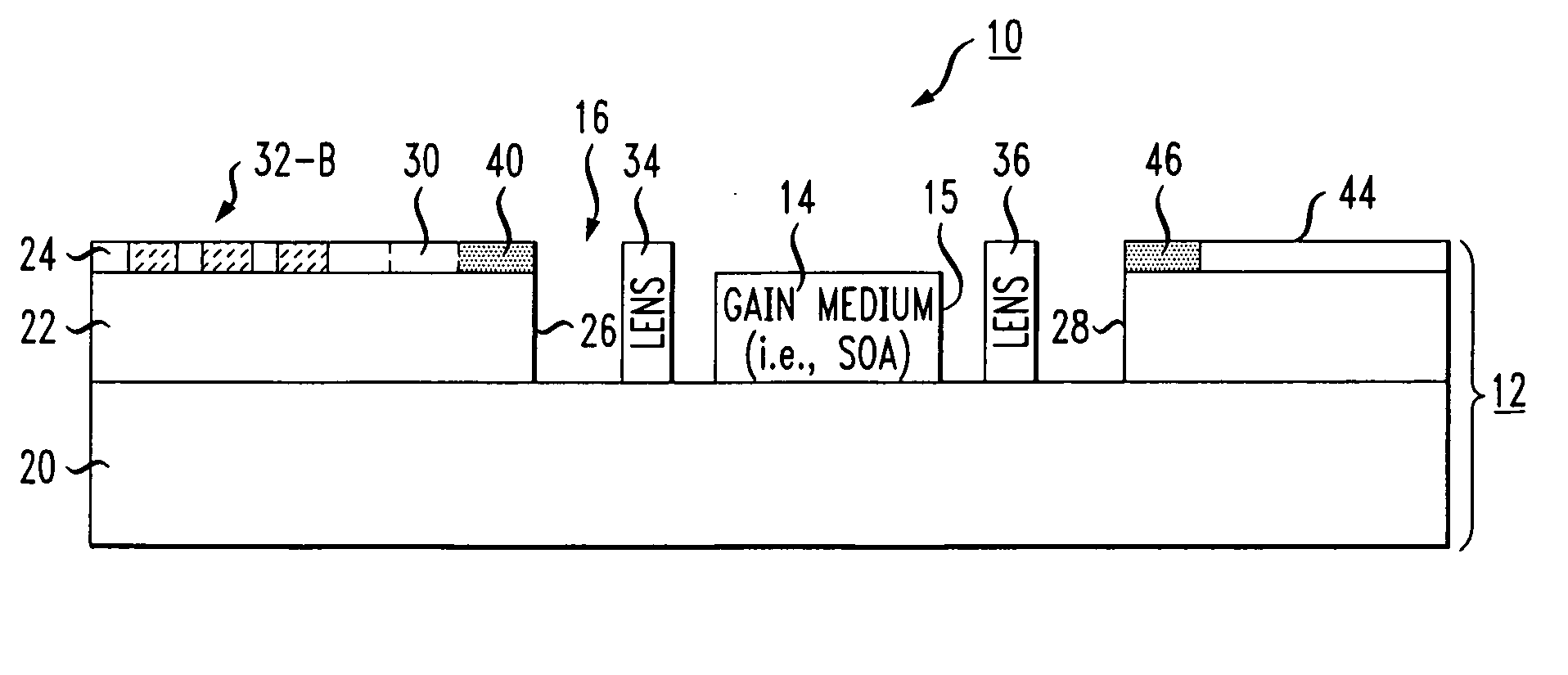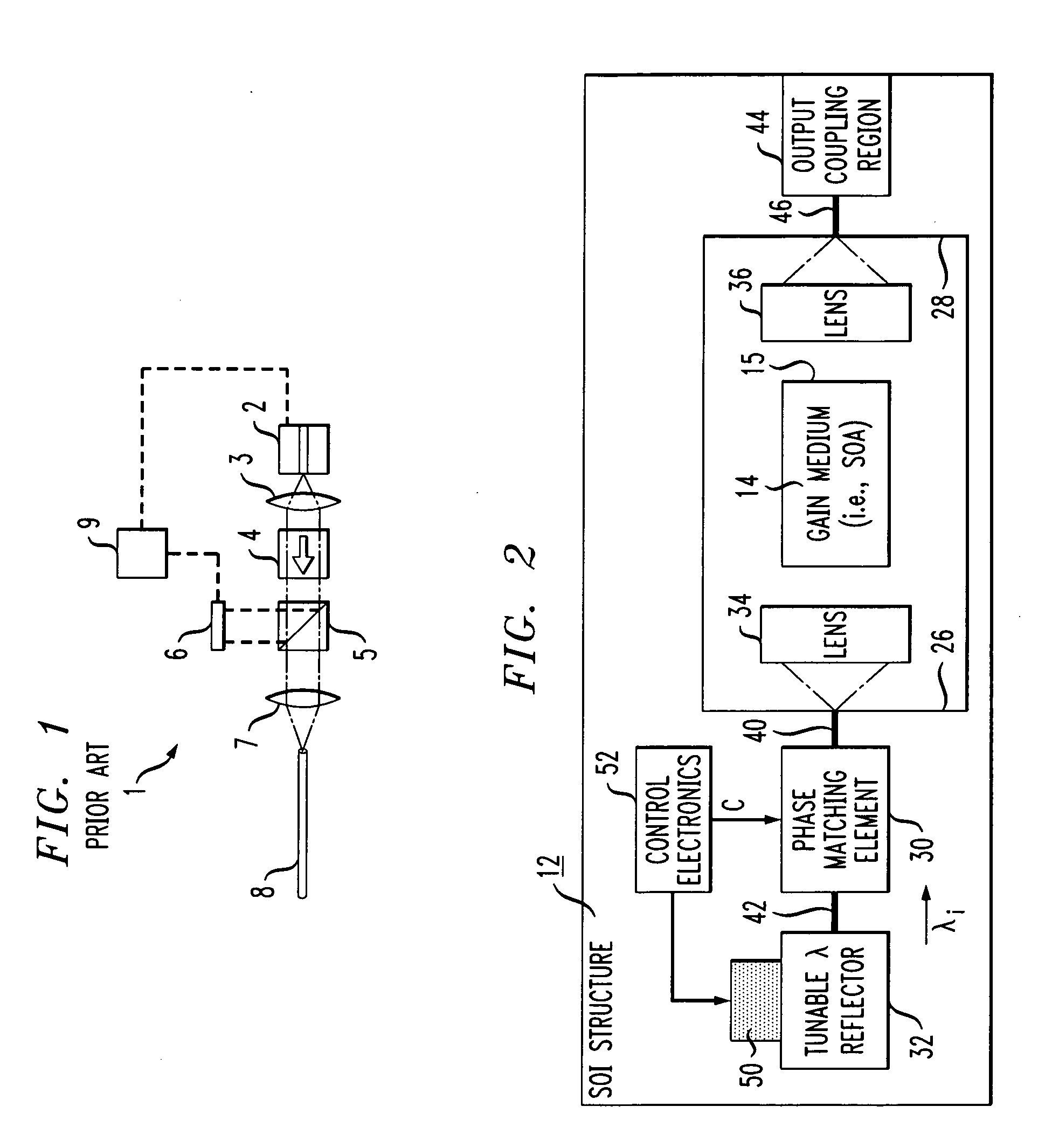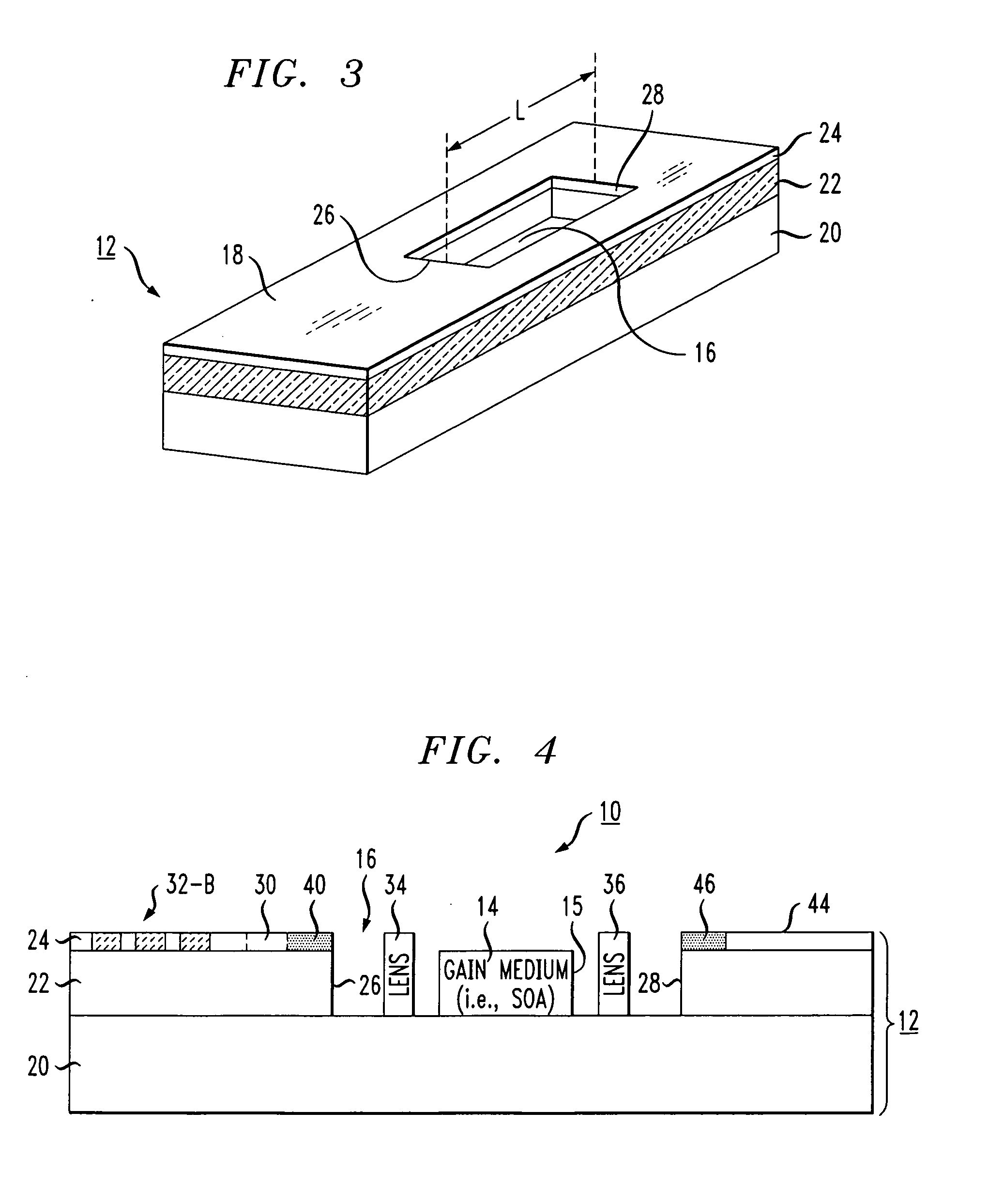Soi-based tunable laser
a technology of tunable lasers and silicon-based insulators, which is applied in the direction of semiconductor lasers, laser details, electrical equipment, etc., can solve the problems of high inventory requirements, high cost of those systems, and disturbing the ability to “tune” the laser over the desired wavelength range, so as to achieve improved thermal isolation
- Summary
- Abstract
- Description
- Claims
- Application Information
AI Technical Summary
Benefits of technology
Problems solved by technology
Method used
Image
Examples
Embodiment Construction
[0021]FIG. 2 is a top view of an exemplary SOI-based tunable laser 10 formed in accordance with the present invention within an SOI structure 12. Tunable laser 10 includes a gain medium 14, such as a semiconductor optical amplifier, disposed within a cavity 16 formed through a top surface 18 of SOI structure 12. FIG. 3 is an isometric view of exemplary SOI structure 12 within which an exemplary laser cavity 16 is formed. As best shown in FIG. 3, SOI structure 12 comprises a silicon substrate 20, a dielectric layer 22 formed over substrate 20 and a relatively thin silicon surface layer 24 (hereinafter referred to as “SOI layer 24”) disposed over dielectric layer 22. As with many other SOI-based optical arrangements currently being developed, SOI layer 24 is used as the waveguiding layer to support the transmission of optical signals within tunable laser 10 in the manner to be described in detail below.
[0022]Advantageously, the use of silicon materials in the formation of structure 12...
PUM
 Login to View More
Login to View More Abstract
Description
Claims
Application Information
 Login to View More
Login to View More - R&D
- Intellectual Property
- Life Sciences
- Materials
- Tech Scout
- Unparalleled Data Quality
- Higher Quality Content
- 60% Fewer Hallucinations
Browse by: Latest US Patents, China's latest patents, Technical Efficacy Thesaurus, Application Domain, Technology Topic, Popular Technical Reports.
© 2025 PatSnap. All rights reserved.Legal|Privacy policy|Modern Slavery Act Transparency Statement|Sitemap|About US| Contact US: help@patsnap.com



